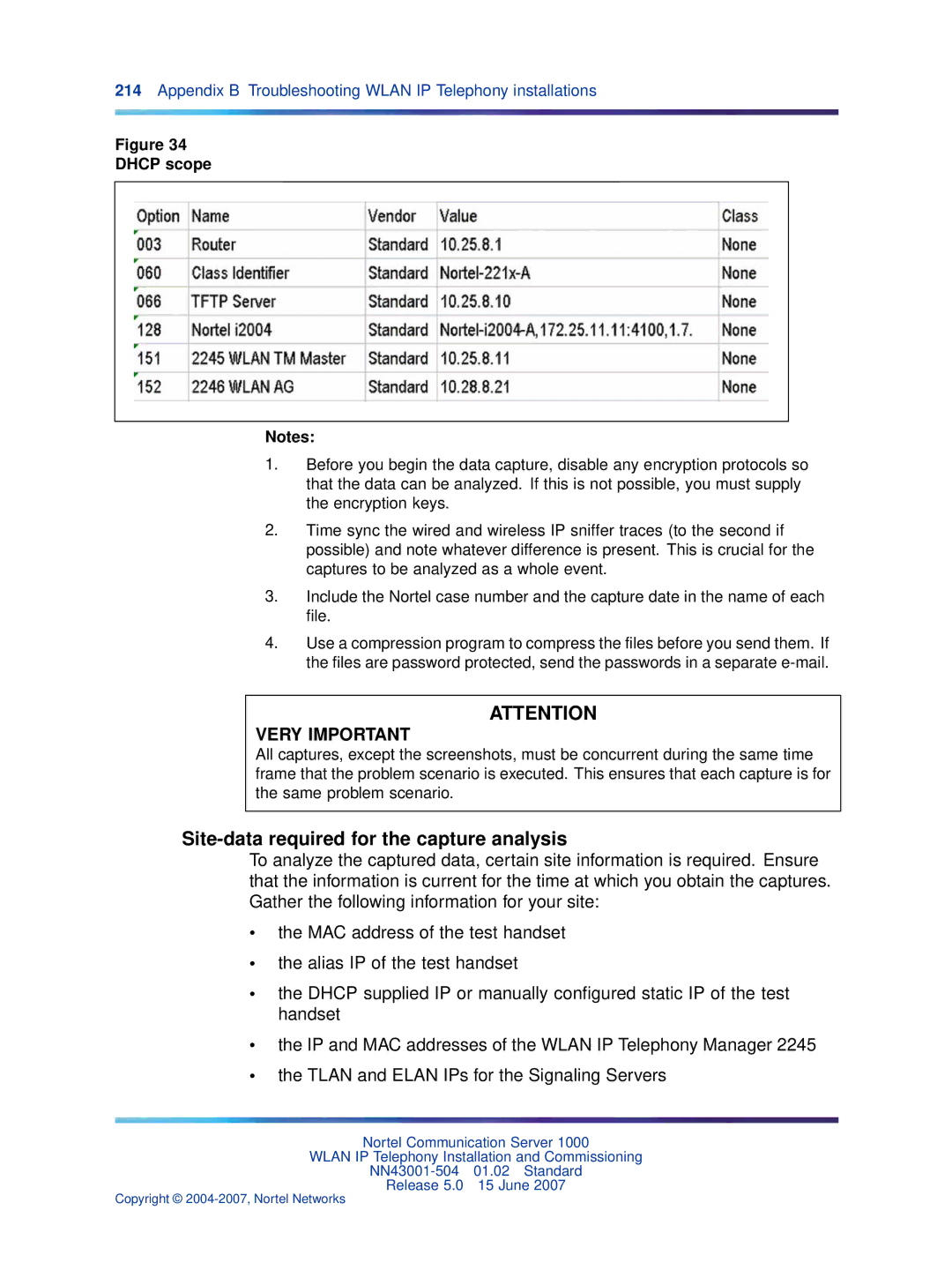
214Appendix B Troubleshooting WLAN IP Telephony installations
Figure 34
DHCP scope
Notes:
1.Before you begin the data capture, disable any encryption protocols so that the data can be analyzed. If this is not possible, you must supply the encryption keys.
2.Time sync the wired and wireless IP sniffer traces (to the second if possible) and note whatever difference is present. This is crucial for the captures to be analyzed as a whole event.
3.Include the Nortel case number and the capture date in the name of each file.
4.Use a compression program to compress the files before you send them. If the files are password protected, send the passwords in a separate
ATTENTION
VERY IMPORTANT
All captures, except the screenshots, must be concurrent during the same time frame that the problem scenario is executed. This ensures that each capture is for the same problem scenario.
Site-data required for the capture analysis
To analyze the captured data, certain site information is required. Ensure that the information is current for the time at which you obtain the captures. Gather the following information for your site:
•the MAC address of the test handset
•the alias IP of the test handset
•the DHCP supplied IP or manually configured static IP of the test handset
•the IP and MAC addresses of the WLAN IP Telephony Manager 2245
•the TLAN and ELAN IPs for the Signaling Servers
Nortel Communication Server 1000
WLAN IP Telephony Installation and Commissioning
Release 5.0 15 June 2007
